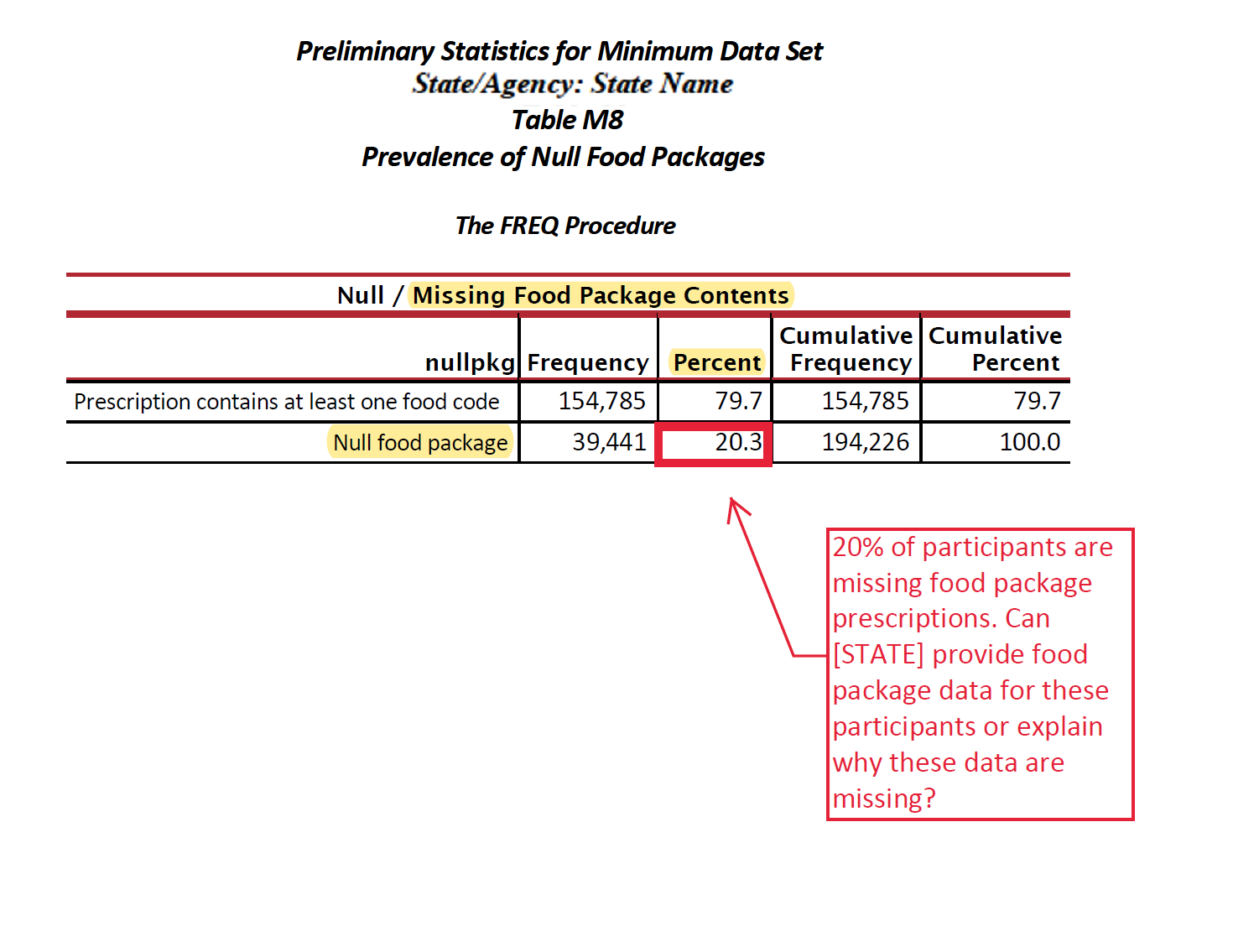I. Sample Follow-Up Email to WIC State Agencies
I. Sample Follow-Up Email to WIC State Agencies.docx
WIC Participant and Program Characteristics Study 2024 and 2026
I. Sample Follow-Up Email to WIC State Agencies
OMB: 0584-0609
Appendix
I.
Sample Follow-Up Email to State Agencies
Good Afternoon/Morning,
Thank you for submitting the WIC [LONGITUDINAL/EBT] data for [STATE]. We reviewed your data using a series of diagnostic tables. Attached you will find some suggestions and questions raised during our evaluation of the tables. Relevant tables have also been included for ease of review.
After you have a chance to review the questions and the tables, we would appreciate your feedback, which you may provide via email or in a brief conference call during which we will answer any questions you may have. Please respond by [DATE] or let me know when we can schedule a conference call within the next week. I can be reached by email at [ANALYST EMAIL] or by phone at [ANALYST PHONE] .
Sincerely,
[ANALYST SIGNATURE]
This
information is being collected from State agencies to enable the
Food and Nutrition Service (FNS) to prepare biennial reports on WIC
participant and program characteristics. This is a mandatory
collection authorized under 7 CFR §246.25(b)(3). FNS uses
the data from these reports to estimate budgets, submit civil
rights reporting, identify needs for research, and to develop and
review WIC policies and procedures. Under the Privacy Act of
1974 and the System of Record Notice FNS-8 USDA/FNS Studies and
Reports, any personally identifying information obtained will be
kept private to the extent of the law. According to the Paperwork
Reduction Act of 1995, an agency may not conduct or sponsor, and a
person is not required to respond to, a collection of information
unless it displays a valid OMB control number. The valid OMB
control number for this information collection is 0584-0609. The
time required to complete this information collection is estimated
to average 30 minutes per response, including the time for
reviewing instructions, searching existing data sources, gathering
and maintaining the data needed, and completing and reviewing the
collection of information. Send comments regarding this burden
estimate or any other aspect of this collection of information,
including suggestions for reducing this burden, to: U.S. Department
of Agriculture, Food and Nutrition Services, Office of Policy
Support, 1320 Braddock Place, Alexandria, VA 22314, ATTN: PRA
(0584-0609*). Do not return the completed form to this address.
The
document below is a sample of the issue memo sent with the follow-up
email. The issue memos have copies of diagnostic tables attached
illustrating each WIC State agency’s specific issues in the
data.
![]()
Memorandum
Date: [DATE]
To: [WIC PC CONTACT]
CC: [ADDITIONAL WIC STAFF]
From: [ANALYST]
Subject: [STATE]’s WIC PC [YEAR] [LONGITUDINAL/EBT] Data Submission
Thank you for submitting the WIC [LONGITUDINAL/EBT] data for [STATE AGENCY]. We have thoroughly reviewed the data and would like your feedback regarding some aspects of the submission. We describe our questions below and attach the relevant tables. We describe our questions below and attach the relevant tables.
Please either send back responses to our questions via email by [DATE] or let us know when you are available for a conference call to discuss the data submission and any next steps we might take. I can be reached at [ANALYST EMAIL ] or [ANALYST PHONE ].
Income – Table G10
Approximately 39 percent of participants have missing income, and no participants have $0 income. Can [STATE] confirm no participants have $0 income and provide data for the participants missing income reporting?
Nutritional Risk Code 2 – Table H3
About 7 percent of postpartum women are assigned nutritional risk codes associated with category N30, which is for breastfeeding women and infants. In PC [PREVIOUS STUDY YEAR], [STATE AGENCY] explained that these mothers were breastfeeding at the time of certification but when the data was pulled, their categories were changed to not breastfeeding/postpartum.
If this explanation is still true, please check here: ☐
Date Breastfeeding Data Collected – K12
This table displays data on infants and children who were 9–13 months old in April [YEAR]. Within this group, 20 percent of the infants and children who were reported to be currently breastfeeding were between 0 and 4 months of age when breastfeeding data were collected, including 9 percent for whom this information was collected at birth. This indicates that the breastfeeding information is old and will likely provide an inaccurate estimate of breastfeeding duration in [STATE AGENCY]. Is [STATE AGENCY] able to report a date that more accurately reflects when the breastfeeding data were collected or confirmed for these infants and children?
Food Package Codes – Table M8
Food package prescriptions should be reported for all participants (except partially breastfeeding women who do not receive a food package). About 20 percent of [STATE AGENCY]’s participants are missing food package code data (i.e., “null food package”). Please provide food package prescription for these participants or explain what accounts for these missing data.




| File Type | application/vnd.openxmlformats-officedocument.wordprocessingml.document |
| Author | Daven Ralston |
| File Modified | 0000-00-00 |
| File Created | 2024-07-21 |
© 2025 OMB.report | Privacy Policy